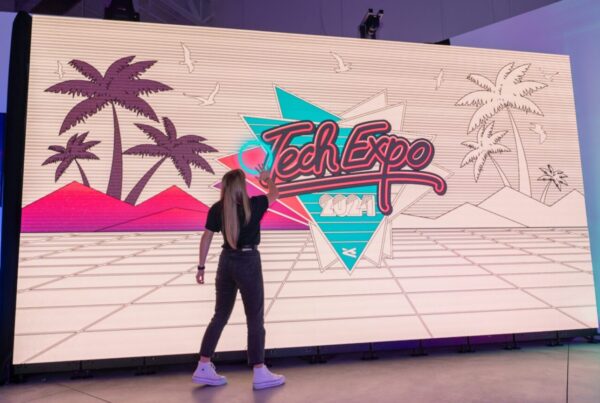The crux of any digital program is always the content. We’re pretty regularly asked about how to avoid the pitfalls with content and not staying current. Whether it’s digital signage, a brand activation, or some other in-store digital, there is always a strong desire to make updates regularly to keep things fresh. Ironically enough, content is the part that’s most often overlooked, unaccounted for altogether, and the item that can create the most problems in a digital program.
With static signage it’s expected that the materials will not change very often. New materials are shipped and placed according to brand standards. There are costs associated with those updates which are accounted for early on and managed against the budget throughout the year. With digital, updates are expected to occur much more frequently but also expected to cost less because there isn’t the associated printing, shipping, and other associated costs. This is where many take a misstep.
The rigor that’s required to update digital content is almost always overlooked, or worse, under accounted for. The same costing method for print can’t be used for digital because of the increase in the volume of content being produced. It is also a different type of content than print, and slightly different than web/broadcast.
Digital is a very hungry beast. Not updating content, or updating as often as print greatly increases the risk of having your digital program retreat back into the noise and go unnoticed by customers. Understanding that there are additional creative requirements is a huge step in allocating proper resources upfront in order to maintain effective digital in-store.
So how do you avoid these pitfalls? While there are several approaches to maintaining this kind of content schedule, we frequently recommend two. Both options require a sound content strategy (typically research based) but fulfill different requirements.
- Content as a Service: In this scenario, a content schedule is created based around budget, research on frequency of visits, seasonal updates, or with new product placement. The new content is created, reviewed, and then pushed to retail locations. This is the easiest method to ensure content is refreshed regularly, and allows the most dynamic changes to the content. This option typically gives better results, but can carry a higher cost.
- Dynamic Templating: This approach to content puts the updates in the hands of non-creative staff. A variety of templates are created for different content types. Generally, these templates will have specific assets that can be updated dynamically — such as title, body copy, and imagery. This makes it simple for anyone to update content while maintaining brand standards. This option provides cost benefits, but the templates can become stale if not occasionally refreshed. The beauty is that corporate or individual locations can contribute this type of content.
Both of these approaches have proven to be very successful for our partners across a variety of applications. The first is definitely a more hands-off approach when it comes to content production, but still requires a time investment in the strategy. This is typically a series of more involved onboarding meetings, and then quarterly checkpoints to address new needs. The second option keeps the ownership of content updates with the client, and perhaps the best part is that it doesn’t require an artist to pump out the volume of content required to keep things fresh.
Many opt for a balance of the two: killer content produced specifically for the medium, and templates to allow corporate and regional locations to make important update and call outs. Contact Us!











